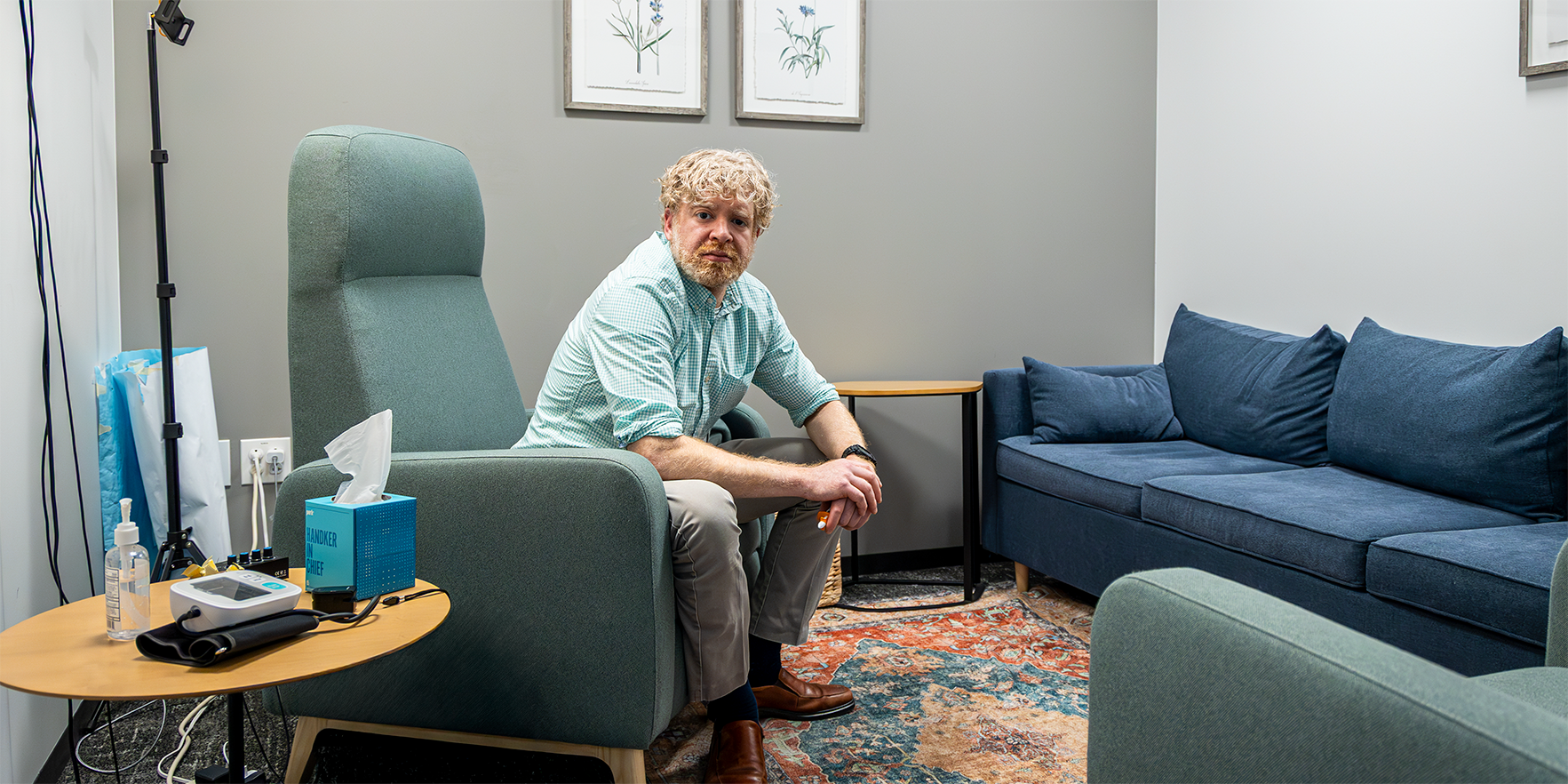Matt Iorio, MD, has found a new professional home at the University of Colorado Anschutz Medical Campus after training at many prestigious universities and hospitals across the United States. He specializes in microvascular surgery that involves saving limbs of traumatically injured patients. When he is not treating patients, Iorio studies alternatives to one of the leading causes of addiction in America — opioids.
Iorio covered just about every region of the United States during his academic endeavors. After growing up in Phoenix, he attended college in Chicago and medical school in Washington, D.C., where he worked with injured veterans and developed an interest in limb salvage.
“We saw a lot of traumatic injuries where we successfully salvaged limbs,” said Iorio, who completed a fellowship in hand and microvascular surgery in Seattle. “Saving a limb has an incredible impact on a patient’s life. An amputation is a major mortality complication.”
Prior to Denver, Iorio was in Boston at Harvard Medical School as part of the plastic surgery and orthopaedic faculty.
He came to CU Anschutz in 2018 and is currently an associate professor of surgery in the School of Medicine and attending physician at both University of Colorado Hospital and Denver Health. He continues to perform limb salvage surgeries while pursuing research interests in the reconstruction of upper and lower extremities through microvascular surgery.
Limb-saving surgeries
Iorio frequently performs free flap surgery, a difficult procedure in plastic surgery to reintegrate soft tissue and blood vessels to a damaged area. During these procedures, he reattaches impossibly small blood vessels with stitches as thin as a single hair. Rebuilding the vascular system of a traumatically injured limb can not only save the aesthetic look of a limb, but more importantly, he says, its function.
“We stand in the doorway of someone on the brink of losing a limb,” he said, referring to the complex procedures in the operating room.
The recovery from these surgeries can be very difficult and patients are subject to chronic pain.
“Patients undergoing these surgeries have polytraumas, and with a lot of injuries,” said Iorio, “They’re immobilized and bedridden for very long periods of time following tough surgeries. They can end up being on enormous doses of opioids and benzodiazepines.”
In an effort avoid these poor outcomes, he frequently employs peripheral nerve catheters during surgery.
Alternatives to problem-ridden pain killers
Nerve catheters are very small tubes that are placed near a surgical site to specifically anesthetize a nerve. Aside from helping block the pain, the catheters can also prevent spasms and protect the microvascular free flap.
“In lower-extremity reconstruction, microsurgery salvage failure rates can be as high as 20 percent due to the difficulty of the operation,” said Iorio. “Anything we can do to help that flap is beneficial to the outcome of the procedure.”
Recently, Iorio studied how peripheral nerve catheters can be used to curb the need for opioids, and the results are encouraging. He found that when peripheral nerve catheters were used, there was reduced concurrent narcotic use and the length of hospital stay was shortened. Also, patients reported lower amounts of immediate postoperative pain.
“In our study, our flap failure rates were 3 percent,” said Iorio. “So, we saw better outcomes, lower pain scores and lower opioid consumption. This looks very promising for the future of limb salvage.”



